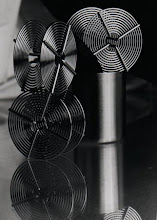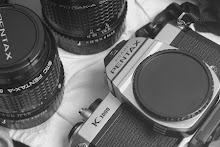When exploring developers, we once again cannot underestimate the impact that Adams’ books have had on the subject. Clearly, when it comes to testing and authority, Adams ruled his day, and those who follow him in this area are, like me, sad imitators. That accepted, let’s do a quick review of what’s what in developers.
The Developing Agent: usually hydroquinone or a proprietary (or once proprietary) chemical compound like Elon or Metol or Amidol. What type of developing agent is in the solution is affected by the overall pH of the solution. Different compounds have different characteristics. Not only do some of them prefer some types of temperatures, but they act as though they have some preferences for the overall pH of the solution. In the case of D-76, above, used as an improvised paper developer, by raising the pH to about 10, we are providing the solution with an environment where the hydroquinone component can be more active.
Some developers contain more than one developing agent. Usually, this is a Metol and hydroquinone combination. In these cases, Metol and hydroquinone are often used together in solution because they form a relationship that is superadditive. That is, when the two compounds are in a solution together, not only do they do the work each would normally do, but they help each other out. The two components of a superadditive developer are stronger than the sum of their individual parts.
Because chemistry is about structure and the flow of energy, chemists examining superadditive solutions have been able to tell us that as one compound begins to work, it frees up energy in the solution in a way that the other compound can work well, too. This other compound, in turn, creates a situation where energy flows well about the first compound, again. This is a simplified explanation, but what is important here is the idea that the two components of a superadditive developer solution work so well together that they work better than either of the individual parts alone would. There’s teamwork in the superadditive developer; this teamwork enables a superadditive developer combination to be very fast, effective, and just as permanent as with either hydropquinone or Metol alone.
In the case of hydroquinone and Metol developer solutions, we typically see that the proportion of Metol governs the mid-range grays, the softer tones. The hydroquinone excels at producing strong sharp blacks and clear areas on the negative. The two together, usually produce stunning results. Using the two together has been an industry standard for generations.
Adjusting Contrast by Adjusting Superadditive Component Relationships in a Developer
Beers’ Two-Solution Developer formula is an example of an adjustable contrast developer based on the concept that the proportion of hydroquinone to Metol can affect the contrast of the emulsion. The two-solution developer has one part based on a Metol solution, with some supporting chemicals in water; the other part is based on hydroquinone and some supporting chemicals dissolved in water. Based on the level of contrast desired in the paper print, the photographer can mix the two to varying proportions. The publishers of Beers’ Two-Solution Developer formula show in their tables and charts approximately how many parts of the Metol solution should be mixed with the hydroquinone solution to achieve a given level of contrast in the print.
Like variable contrast printing, the developer solutions can be used to control contrast. For some people this is an unusual concept. A lot of times when we think about photographic development, we think of the three baths, and maybe a given required time and temperature. Sometimes we can quickly stumble upon the idea that a longer time in one bath will lead to a greater effect on the paper in the bath; this is not entirely true always, but let’s accept that idea for now.
Meanwhile, the composition of the developer itself can be used to bring out certain properties in the print. Yes, even a very strong, too strong, concentration of developer solution in a tray could, under extreme circumstances, transfer so much chemical energy to the print paper as to blacken it. This rarely happens, and should never occur when the developer is mixed to the recommended working strengths, but is possible. Point is, the chemistry of the baths transfers energy to the paper just as exposing it to light would. An idea we don’t think of, often.
So, just as we would adjust the contrast of a paper print by using a filter to adjust the wavelengths of light energy reaching the photosensitive paper, so we can also adjust contrast through developer composition. This is because different chemical reactions exchange energy at different rates; it is analogous to energy arriving to the photosensitive paper at a different rate by being filtered to limit the wavelength of light.
Adjusting Exposure By Changing the Duration of Chemical Exposure
Also, we could, if we wanted, adjust exposure through development bath duration. Idea there would be to “pull” the print; we would physically remove the print from the bath earlier than normal. Or, we could “push” the print, keeping it in the developer longer than normal. This has its limitations; just like pushing or pulling the development or exposure of negative film. The photopaper, or film, doesn’t get more or less of its potential energy as a result of the pushing or pulling. The structure of the photopaper or film only has the properties it was made with.
There’s no fairy godmother to bless us with new, previously unattainable benefits from the film just because we changed the development process. We can, however, with careful planning and timing, gently manipulate the development of film or paper to bring out or slightly accentuate those qualities that are there by changing the flow of energy around the emulsion by changing the composition of the solution, the duration the solution is exposed to the emulsion or the intensity (the ratio of chemistry to water) of the solution.
# # #






No comments:
Post a Comment